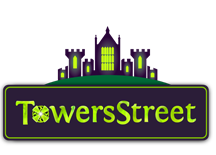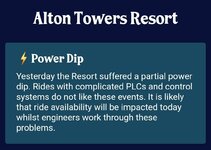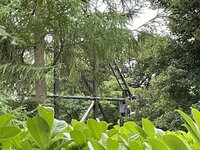DiogoJ42
TS Member
- Favourite Ride
- The Metropolitan Line
Simple: the cars would self-right as the rotation slowed down. No one would be "stuck upside down". There might be a wait to lower the lift arm, but no one would be harmed.Somebody on YouTube made an interesting comment that I hadn't thought of: what would have happened if Enterprise suddenly had a power cut whilst riders were upside-down?
Unlike most rides, the riders weren't secured into the seats whilst upside-down, so would their heads have hit the roof of the car? Or would the ride somehow automatically have brought them safely down?



